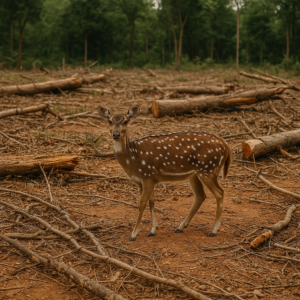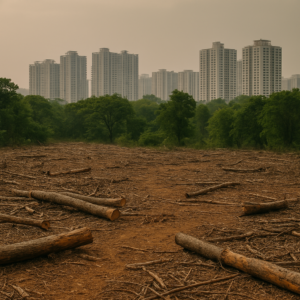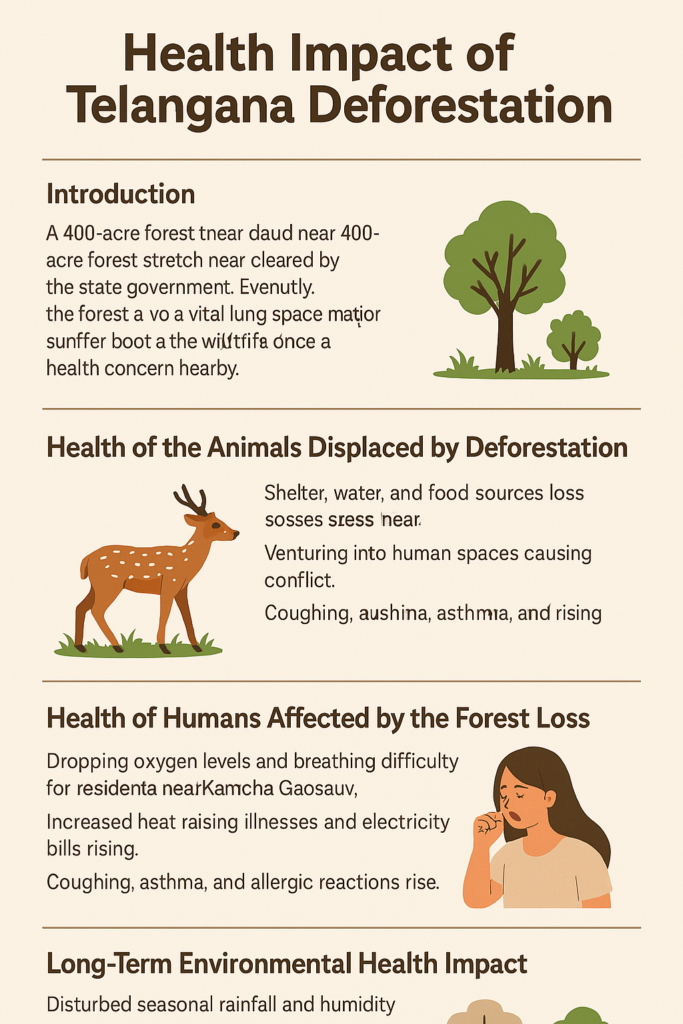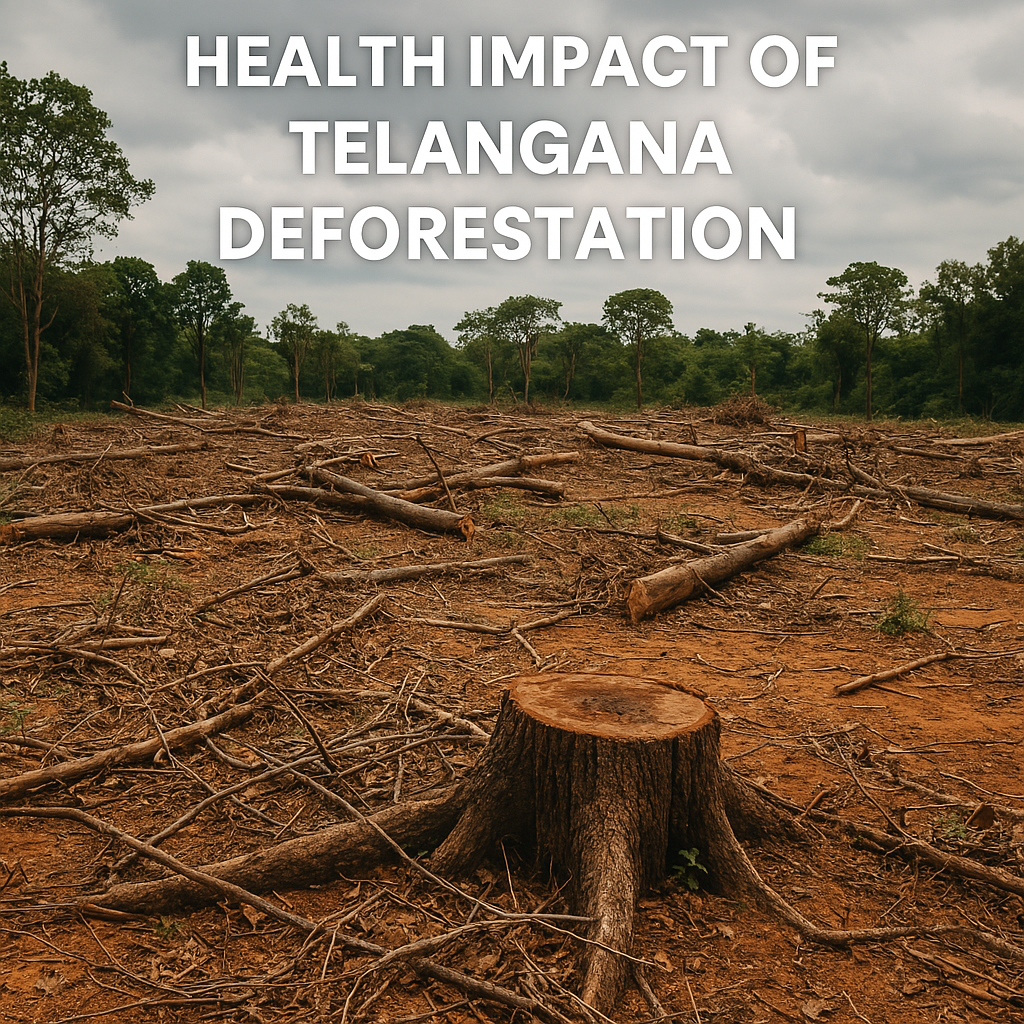In Telangana, a 400-acre forest stretch near Kancha Gachibowli was recently cleared by the state government. This decision shocked environmentalists and citizens alike due to the region’s dense biodiversity and ecological importance. The green belt provided habitat to several species, many protected under Indian wildlife laws. Deforestation began swiftly for infrastructure projects, ignoring repeated pleas from the local population and environmental groups.
Eventually, the Supreme Court of India stepped in to halt further deforestation and excavation activities.
The intervention came after growing protests and media coverage highlighting the damage. This forest was a vital lung space for nearby Hyderabad residents. Animals, plants, and humans coexisted in this ecosystem for decades without disruption. The loss of trees, shade, and moisture balance has now become a health concern. This blog explores how this deforestation in Telangana has impacted both wildlife and the human population nearby. Health, habitat, and harmony have all suffered a major blow.
Health of the Animals Displaced by Deforestation
Forest loss directly affects animals who call it their home. In Telangana, several species have now lost shelter, water, and food sources. Spotted deer, wild boars, birds, and reptiles lived peacefully in this green canopy. Many of these species are protected under the Wildlife (Protection) Act of 1972. Without shelter, these animals face stress, heat, and higher risk of disease. Sudden exposure to urban sounds and light creates severe trauma among them. Natural food chains are broken when animals can’t hunt or graze freely.

Dehydration increases as ponds and water bodies dry without tree cover. Some species are now venturing into human spaces to survive and feed. This causes panic, accidents, and rising cases of human-animal conflict. Baby animals and elderly ones are especially vulnerable in open landscapes. Lack of nesting trees and burrows leads to breeding failure for birds. Many are dying silently, unable to cope with habitat loss and heat. Forests are their pharmacy, home, and food market—all lost now.
Health of Humans Affected by the Forest Loss.
The forest served as a natural oxygen hub for surrounding localities. Residents near Kancha Gachibowli enjoyed clean air, shade, and fresh breeze. Trees filtered dust, pollution, and carbon dioxide effectively throughout the year. With 400 acres gone, oxygen levels have started dropping in the area. This makes breathing difficult, especially for the elderly and small children. Pollution from nearby roads now travels unfiltered to residential zones. Heat and sunlight penetrate deeper into communities, raising indoor temperatures. This increases electricity bills and heat-related illnesses like dehydration and fatigue.
Doctors in Telangana are reporting increased cases of coughing and asthma. Schools are seeing more children complain of headaches and sore throats. Trees also help keep allergens like pollen and dust mites in check.

Without trees, allergic reactions are becoming common among locals. Mental health is impacted too—green views reduce stress and anxiety. With the greenery gone, stress levels are visibly rising among citizens. People miss morning walks, bird calls, and peace they once enjoyed.
Long-Term Environmental Health Impact in Telangana.
Forests are climate regulators that maintain rain patterns and temperature balance. Losing 400 acres will deeply disturb Telangana’s seasonal rainfall and humidity. Without tree roots, soil erosion and dust storms will increase in summer. Heavy rainfalls will wash away topsoil, damaging farmlands and groundwater recharge areas. This leads to poor crop growth and affects food availability and nutrition. Water retention in the forest helped recharge borewells and local tanks nearby. Now, reduced rain absorption will dry water sources faster in summer months.
Climate resilience of the area drops when trees are chopped without warning. Telangana already faces hot summers; forest loss will push temperatures even higher.
This worsens heatwave conditions, especially for low-income residents without air conditioning. Mosquitoes, flies, and disease-carrying insects will now breed more openly. Open land and garbage attract vectors, raising dengue and malaria risks. Climate migrants—people leaving villages due to poor climate—may increase rapidly. This urban influx adds further pressure on city health systems. Environmental balance once lost takes decades to rebuild and restore.

Conclusion
Deforestation in Telangana has done more than remove trees—it has destabilized the region’s health and environment. Animals lost homes, humans lost breath, and the climate lost balance. The Supreme Court’s intervention is timely but must lead to full restoration. The green cover needs to be replanted, protected, and kept untouched. Local communities, scientists, and authorities must work together urgently. A forest is not just land—it’s a living shield for health and survival.
Utpal Khot
Copyright © Utpal K
1. If you share this post, please give due credit to the author Utpal Khot
2. Please DO NOT PLAGIARIZE. Please DO NOT Cut/Copy/Paste this post.
© Utpal K., all rights reserved.
Copyright Notice: No part of this Blog may be reproduced or utilized in any form or by any means, electronic or mechanical including photocopying or by any information storage and retrieval system, without permission in writing from the Blog Author Utpal Khot who holds the copyright.





